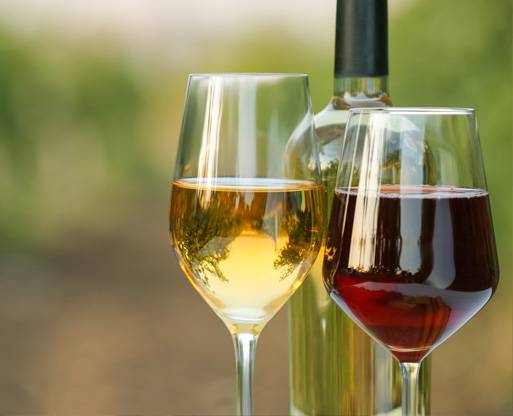Is wine fattening?

Eva Pizarro / Sumiller
We are going to solve this important question, so let's see what wine is made of.
Wine is a drink obtained from the fruit of the grape, which has to ferment, and to do this, it is necessary for the grapes to contain minimum levels of sugar.
Sugar! The big word forbidden in all diets. The main carbohydrates we are going to find in this drink are glucose and fructose. Alcoholic fermentation will transform the sugars of the must (grape juice) into ethanol, a type of alcohol. After fermentation, residual sugars may remain in our wines, those that have not been consumed during fermentation, resulting in semi-sweet or sweet wines.
WHAT IS THE CALORIE INPUT OF WINE?
There is no single answer, that will depend on the type of wine, more specifically the alcohol content and the amount of residual sugars.
The higher the alcohol content, the more calories. Therefore:
- White wines usually have less alcohol content than red wines, less calories.
- Fortified, Sherry, Port, Madeira wines, etc. have a higher alcohol content (around 17-18%) and therefore have more calories.
- Wines with onger ageing times usually increase their alcohol content due to an evaporation process that takes place in the barrels, therefore, more calories.

This is its classification:
• Sweet > 50 g/l sugar
• Semi-dry 33-50 g/l sugar
• Dry 17-35 g/l sugar
• Extra Dry 12-20 g/l sugar
• Brut < 15 g/l sugar
• Extra Brut < 6 g/l sugar
• Brut Nature < 3g/l sugar
On the other hand, wines with more residual sugar, more calories:
- Sweet or semi-sweet wines have a higher content of unfermented sugar than dry wines.
- Sparkling wines are classified according to the sugar added through the expedition liqueur (the one formed by a mixture of wine, liqueurs, and sugar). This is added after the second fermentation in the bottle and subsequent disgorging, to offset the losses of wine in the bottle after this process. The amount of sugar is not the same in all of them; in a sweet one about 50g/l are added, and in the Brut Nature < 3g/l
BUT... HOW MANY CALORIES DOES A GLASS OF WINE HAVE?
The answer is about 70/80 calories in dry wines. Or what is the same, the calories that a natural yogurt may have. Seen like this, it's not bad, is it?
If we include the fact that wine, like any alcoholic beverage, taken in moderation, has psychoactive effects (it stimulates the appetite, calms you down, helps the circulatory system, reduces bad cholesterol and promotes good cholesterol), and also has antioxidant properties, we can deduce that a glass of wine a day will not harm our diet.
It should also be noted that the calories afforded by a glass of wine are not "empty calories", i.e., there is a nutritional and energy input, since wine contains vitamins, minerals, potassium... among others.
Wine, considered a food, pursuant to Law 24/2003 of June 10, on vineyards and wine, is part of the Mediterranean Diet and, as such, is a key element.
What do you think about?
Share comments, opinions and tricks with the Community







